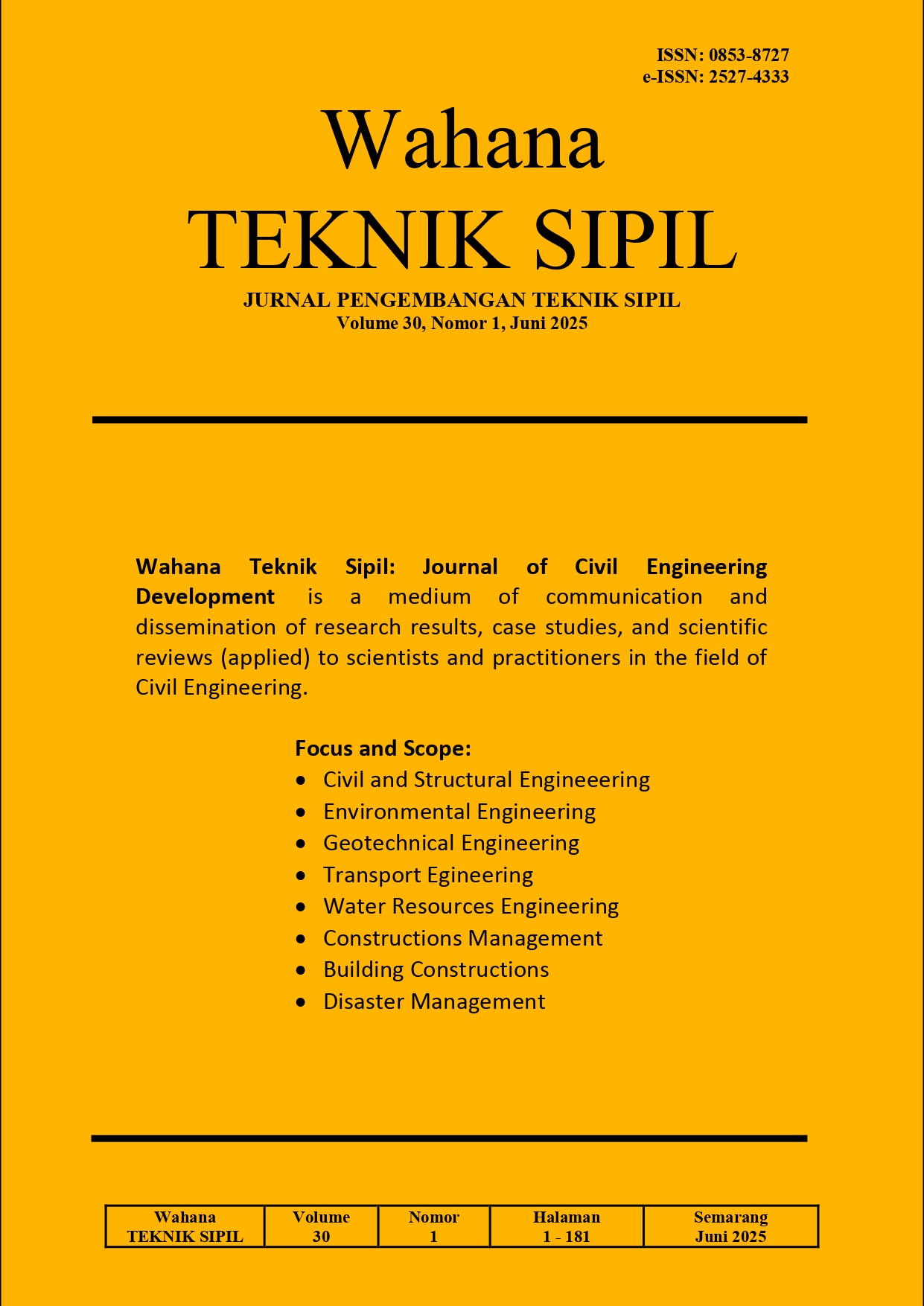ANALISIS KESELAMATAN LALU LINTAS DI AREA SIMPANG BAWEN
DOI:
https://doi.org/10.32497/wahanats.v30i1.6367Abstract
Simpang Bawen area connects Semarang with surrounding cities such as Salatiga, Surakarta, and Yogyakarta. Between 2017-2023, 98 accidents were recorded starting from Hortimart Agro Center to Simpang Exit Tol Bawen. This study aims to analyze the characteristics of traffic accidents, contributing geometric and operational design factors, and recommendations for safety improvements. The in-depth analysis method in qualitative descriptive research was used with accident data from the Semarang Police Traffic Unit and supporting data from the Central Java-Yogyakarta National Road Implementation Center. Field surveys were conducted to observe location conditions. The analysis was carried out by dividing the research location into five zones. The results of the analysis showed that the most frequent accident types varied in each zone and were dominated by motorcycles and heavy vehicles. Accidents occurred in sunny weather with moderate severity and were caused by non-priority behavior. Recommendations for improvement include closing U-turns, adding rumble strips, building flyovers, installing traffic lights, enforcing traffic laws, and improving street lighting.
Downloads
Published
Issue
Section
License
Copyright (c) 2025 Eleonora Jade Marsha Lita, Bagus Hario Setiadji, Bambang Haryadi

This work is licensed under a Creative Commons Attribution 4.0 International License.
Authors who publish with this journal agree to the following terms:Authors retain copyright and grant the journal right of first publication with the work simultaneously licensed under a Creative Commons Attribution License that allows others to share the work with an acknowledgement of the work's authorship and initial publication in this journal.
Authors are able to enter into separate, additional contractual arrangements for the non-exclusive distribution of the journal's published version of the work (e.g., post it to an institutional repository or publish it in a book), with an acknowledgement of its initial publication in this journal.
Authors are permitted and encouraged to post their work online (e.g., in institutional repositories or on their website) prior to and during the submission process, as it can lead to productive exchanges, as well as earlier and greater citation of published work (See The Effect of Open Access).






